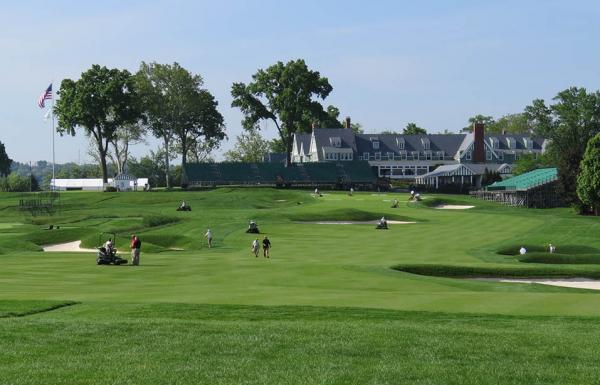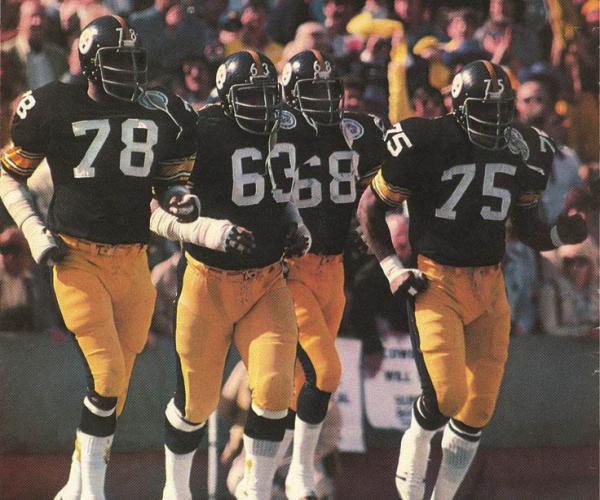Pittsburghers take great pride in their city's sports heroes and heritage.
In an area that gave the sports world the Immaculate Reception, Roberto Clemente, the Steel Curtain, Mario Lemieux, the "We Are Family" Pirates and most recently, the Penguins' win in the Stanley Cup final, Oakmont Country Club stands among Western Pennsylvania's greatest sports icons.
The course built in 1903 by Pittsburgh industrialist H.C. Fownes takes center stage again this week when it hosts the U.S. Open for a record ninth time.
"There is a lot of tradition and history here," said Oakmont superintendent John Zimmers.
"I don't think any other club is more identified with the U.S. Open than this."

The steel mills that once dotted the Pittsburgh skyline are gone, but the toughness they instilled remains.That grittiness translates at Oakmont, where members demand the course be maintained to such standards that playing a round there is akin to surviving a street brawl.
"Why do (the members) want it to be this way? There is something about this Western Pennsylvania thing," said Zimmers, a native of Tyrone, Pennsylvania about 100 miles east of Pittsburgh. "The Pens are supposed to be in the (Stanley) Cup, the Steelers are supposed to go deep into the playoffs and make a run for the Super Bowl every year and Oakmont is supposed to be ready for the U.S. Open every year.
"It is diabolical, and it has stood the test of time."
Indeed.
Conditions at Oakmont are so consistently difficult and immaculate that if the Open were played there every year, other superintendents would have the same love/hate relationship with it that they do Augusta.
"I think he wanted to build a golf course that was tougher than anything else he had seen or played," said Charlie Howe, the USGA's U.S. Open Tournament Manager. "Over the years, that same philosophy has been instilled in this membership."
Fownes wasn't an accomplished architect when he built what was intended to be the world's most difficult course 113 years ago. He did not rely on trees to add teeth to the routing, and he didn't have to. He made Oakmont hard by building lightning fast putting surfaces that sloped every which way when no one else was, by building it long when few others were and by studying where golf shots landed and placing bunkers there.
"When he built it, there were only a couple of bunkers on second hole," Howe said. "He'd watch people play, and wherever the ball landed, a day later, he'd have a bunker there. That's how he designed the course."
Originally built at 6,400 yards, Oakmont had grown to a then-unheard of 6,929 yards when Tommy Armour won the first U.S. Open played there in 1927.
 Oakmont's face remained unchanged until an aggressive sapling-planting program in 1962, the same year Jack Nicklaus outlasted Arnold Palmer for his first professional win during the U.S. Open at Oakmont, served to change the appearance of the course during subsequent generations.
Oakmont's face remained unchanged until an aggressive sapling-planting program in 1962, the same year Jack Nicklaus outlasted Arnold Palmer for his first professional win during the U.S. Open at Oakmont, served to change the appearance of the course during subsequent generations.By the time the 1994 U.S. Open was in the books, many purists had become unhinged at tree-lined look.
The process of returning Oakmont to its unshaded roots really began long before Zimmers arrived 17 years ago, with a cloak-and-dagger approach of cutting down and removing trees in the middle of the night, according to a 2007 story by ESPN.com.
Zimmers continued that process, taking down thousands of trees before the '07 Open, and even more since, resulting in the extraction of an estimated 15,000 trees during the past two decades for a look much like the view that greeted famed sportswriter Grantland Rice in 1939 when marveled at how he could see flagsticks on 17 greens from the clubhouse.
The current setup is one of which Fownes and all Pittsburghers would be proud.
The high grass on the fairway side of the bunkers has been cut down to make the hazards more accepting of stray shots, and the graduated rough at Oakmont is so penal, the USGA agreed to shave down the deep stuff by 2 inches after players complained two days before the tournament even started. The severity of the rough coupled with green speeds of 14 to 14.5 have combined to strike such such fear into the hearts of the world's best players, there has been a rush on the equipment trailers as many search for a more accurate alternative to the driver.
Webb Simpson called Oakmont's greens "Augusta on steroids," and Brandt Snedeker said the putting surfaces are the most difficult the pros will face all year. During a practice round early in the week, Rory McIlroy called Oakmont the toughest test in golf, and added that a win there would make him a "complete player.
"This is going to be hard test," Zimmers said. "But anyone will tell you, it will also be a fair test. This course isn't tricky."
It doesn't have to be, it's Pittsburgh tough.

